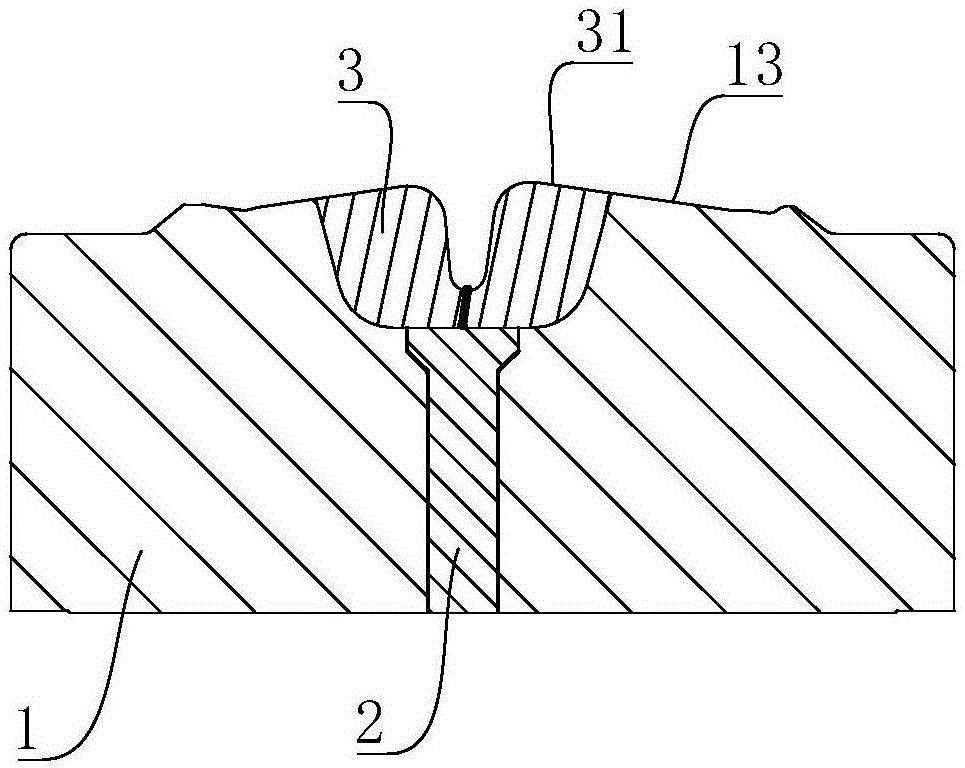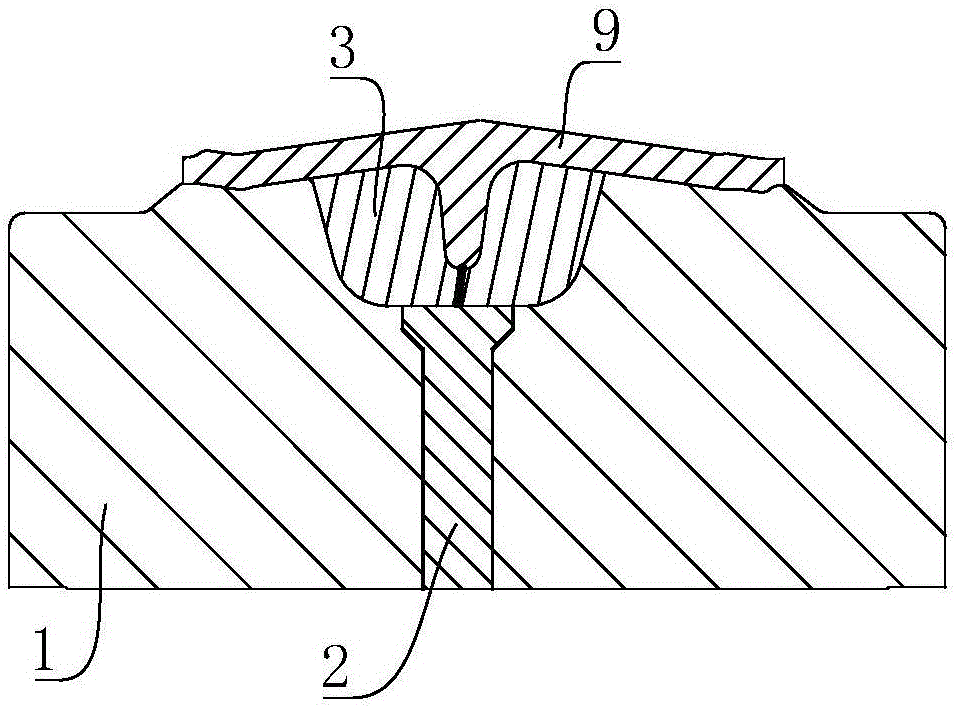Core-embedded mold facilitating ejection-out of forging
A technology of inserting cores and molds, which is applied in the manufacture of tools, forging/pressing/hammer devices, forging/pressing/hammering machines, etc., which can solve the problems of reduced enterprise efficiency, deformation and damage of forgings, and time-consuming cleaning of molds. , to achieve the effect of avoiding production interruption and avoiding damage
- Summary
- Abstract
- Description
- Claims
- Application Information
AI Technical Summary
Problems solved by technology
Method used
Image
Examples
Embodiment Construction
[0019] Below in conjunction with accompanying drawing and embodiment the present invention is further described:
[0020] A core-inserted mold for facilitating the ejection of forgings, including a mold body 1, a first cavity surface 13 is provided on the surface of the mold body 1, a movable ejector rod 2 for ejecting forgings is arranged in the mold body 1, and the mold body 1 A mosaic cavity 12 is also provided, and a mosaic core 3 is embedded in the mosaic cavity 12. The surface of the mosaic core 3 exposed from the mosaic cavity 12 is provided with a second cavity surface 31, and the second cavity surface 31 is in contact with the first cavity surface. The cavity surface 13 is combined into a preset cavity, the mosaic cavity 12 is movably matched with the insert core 3, and the insert core 3 is located on the ejection path of the ejector rod 2, and the insert core 3 is ejected close to the ejector rod 2 The size of one end is smaller than that of the opposite end; the inl...
PUM
 Login to View More
Login to View More Abstract
Description
Claims
Application Information
 Login to View More
Login to View More - R&D
- Intellectual Property
- Life Sciences
- Materials
- Tech Scout
- Unparalleled Data Quality
- Higher Quality Content
- 60% Fewer Hallucinations
Browse by: Latest US Patents, China's latest patents, Technical Efficacy Thesaurus, Application Domain, Technology Topic, Popular Technical Reports.
© 2025 PatSnap. All rights reserved.Legal|Privacy policy|Modern Slavery Act Transparency Statement|Sitemap|About US| Contact US: help@patsnap.com



